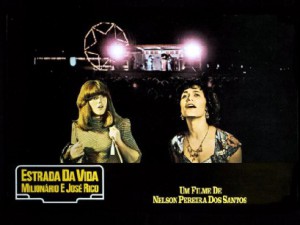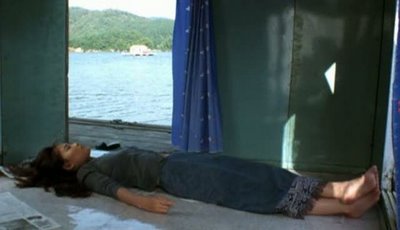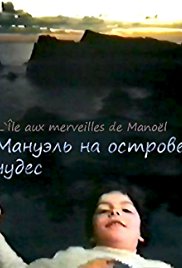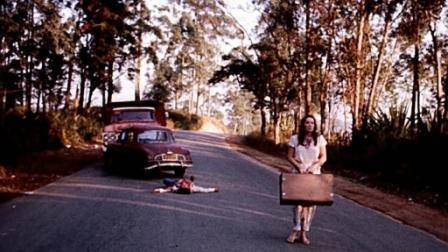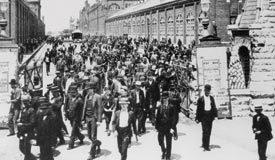From Sight and Sound (Spring 1985). — J.R.
With its continuing devotion to the independent and marginal, the Rotterdam Film Festival offered fewer peaks this year than last, but more than enough rolling happy valleys in between. Full-bodied retrospectives given to Jonathan Demme and Nelson Pereira dos Santos wove their way almost contrapuntally through the nine days of movies -– providing the selection with a sturdy populist backbone. Guided by the Langlois-like eclecticism and passion of director Hubert Bals, the festival virtually rebaptises every film that it shows under the banner of a relaxed, low-budget freedom that the Spielbergs and Coppolas can only dream about.
Pereira dos Santos and Demme are cases in point. From the sixteenth century (How Tasty Was My Little Frenchman) to the post-nuclear future (Who Is Beta?) to the impoverished present (Rio, 40 Degrees; Vidas Secas), dos Santos’ films blend anthropological wit with neo-realist compassion. The sociological wit and Renoir-like warmth of Demme exude a comparable bias towards the downtrodden. Oddly enough, the two sensibilities nearly come together in the very different pop/folk musicals Estrada da Vida (1980) and Stop Making Sense (1984). Respectively a docu-drama about wall painters who make it big as country singers in Sao Paulo, and an on-stage concert performance by the Talking Heads, both films make striking use of flat colour backdrops to objectify and enhance the cultural clout of the performers.
Among the new films, Chantal Akerman’s L’Homme à la Valise presents the film-maker and her own Paris flat in the starring roles. After subletting to friends for a couple of months, Akerman returns to write a script and discovers that an American (Jeffrey Kime) is still occupying the premises, with several weeks to go before he moves out. Barricading herself in the living room with her typewriter, Akerman begins to chronicle her neurotic obsession with his presence, and formally the film proceeds like a series of boxes — each room in the flat (which the film never escapes) and each day (signaled by a separate title card and journal entry) constituting another square in a maniacal mind-game with no issue.

By the time Akerman has installed a video camera to record her flatmate’s arrivals and departures on the street below, the contained fury of this crazed treatise on flat-sharing has been further intensified by the relentless symmetrical framing and Tati-like exaggeration and isolation of sounds (typing, bath-running, tooth-brushing). Not quite distanced enough to work as pure comedy, despite the cartoonish contrast in size between short Akerman and hulking American, this hour-long auto-critique has a density and perfection reclling Jeanne Dielman; like the earlier film, it jangles nerves and haunts the mind in roughly equal proportions.
Turning up at the eleventh hour. Raul Ruiz’s Manuel de l’île des merveilles, a French-Portuguese TV co-production shot in 16mm and made up of three 50-minute episodes, won the prize awarded by the Dutch critics. Although some members of the foreign press preferred Notre Marriage the first feature of Valeria Sarmiento, Ruiz’s wife, shot on the same island (Madeira) it was a respectable choice, if not quite major Ruiz.The first episode, ‘Les Destins de Manuel’, gives us a narrative roundelay of recurring images and incidents whereby the hero aged seven meets himself aged thirteen and get a forecast of future events. The second part, ‘Le Pique-nique des Rêves’, has Manuel exchanging bodies with an adult woodcutter, while the third, ‘La Petite Championne d’Echecs’, relocates him in an aunt’s haunted house and pivots around a children’s party with Carrollian overtones. Registering mainly as three separate films with the same hero, Manuel grows in fascination as it gradually forsakes the trappings of plot for a kind of pure dream poetry of childhood fantasy, where the uncanny images and conceits, as in Raymond Roussel, seem to be self- generating.
The festival’s main trump card is a talent for ferreting out odd film-makers of interest whom one would be unlikely to encounter elsewhere. Foremost among these was Carlos Reichenbach, a post-cinema nuovo figure whose unconventional features are distributed exclusively in South American sex cinemas. Lilian M. Confidential Report (1975), reportedly the best, begins by interviewing the actress playing the title role about her part, and proceeds with a tragi-comic tale about Lilian (née Maria) leaving farm and family with a travelling salesman for the glamour of Sao Paulo. A social critique delivered in the hyperbolic style of a Scorsese or Fuller, the film boisterously collides genres and tonal registers throughout, and makes only the most minimal nods in the direction of softcore fare while veering wildly from one inspiration to the next.
Elizabeth Lennard’s Tokyo Melody, a portrait of Japanese pop star Ryuichi Sakamoto (costar and score composer of Merry Christmas, Mr Lawrence) made for French TV, deftly mixes music and talk without forcing the two to compete for attention, while Mark Peploe’s half-hour Samson and Delilah adroitly adapts a D. H. Lawrence story with beautifully lit interiors and a minimum of fuss. Three films by Chicago’s Kartemquin Collective, Taylor Chain I and II and The Last Pullman Car, offer bracing no-nonsense accounts of Midwestern factory strikes. But perhaps the most original of the shorts was a 1981 Los Angeles student film, Amnon Buchbinder and John A. Owen’s Criminal Language, which explores the disturbing possibilities of interspersing three theoretical film genres — film noir, cinéma-vérité, and snuff films and their accompanying spaces before collapsing all three into the same violent narrative matrix.
On the Market, Noël Burch and Christopher Mason’s Arts Council featurette The Impersonation was a particular highlight. An airy pseudo-documentary about a primitive painter named Reginald Pepper, the film takes the form of an unfinished student work from the Swenson School of Art and Design, with arch off-screen directives from the tutor.(‘To Jean-Luc Godard unit: please stick to the assigned topic.’) At its funniest and most inventive — such as a film-set rendering of the skewered perspective, outsized clothes and overgrown cats in a typical Pepper domestic interior -– the film captures some of the same fanciful play to be found in Burch’s previous Correction, Please, with an implicit ideological critique running roughly parallel to his theoretical work on primitive cinema. As close to Ruiz as the British cinema is likely to come, it would make a plausible double-bill with L’Hypothèse d’un Tableau Volé.
.IONATHAN ROSENBAUM


